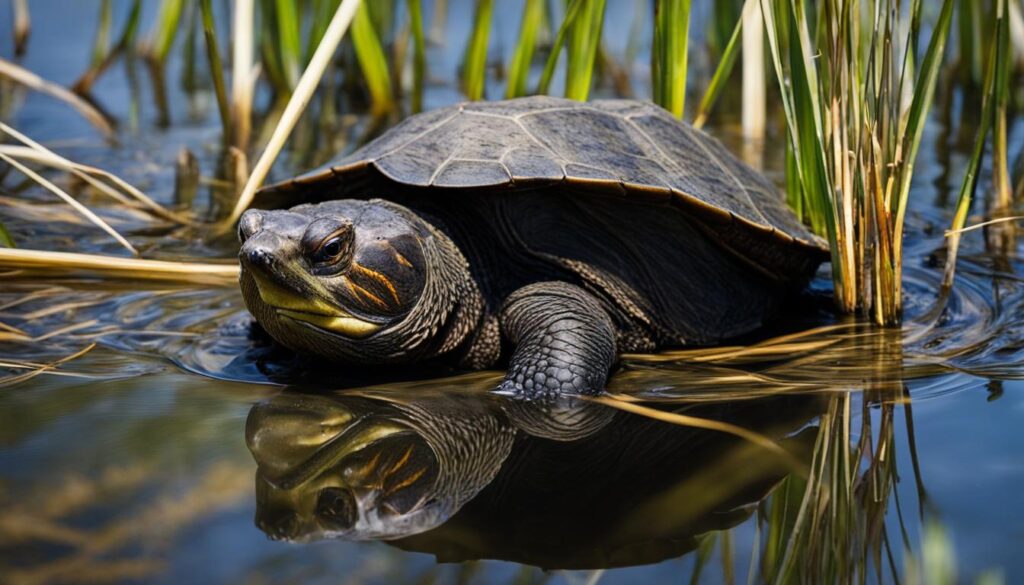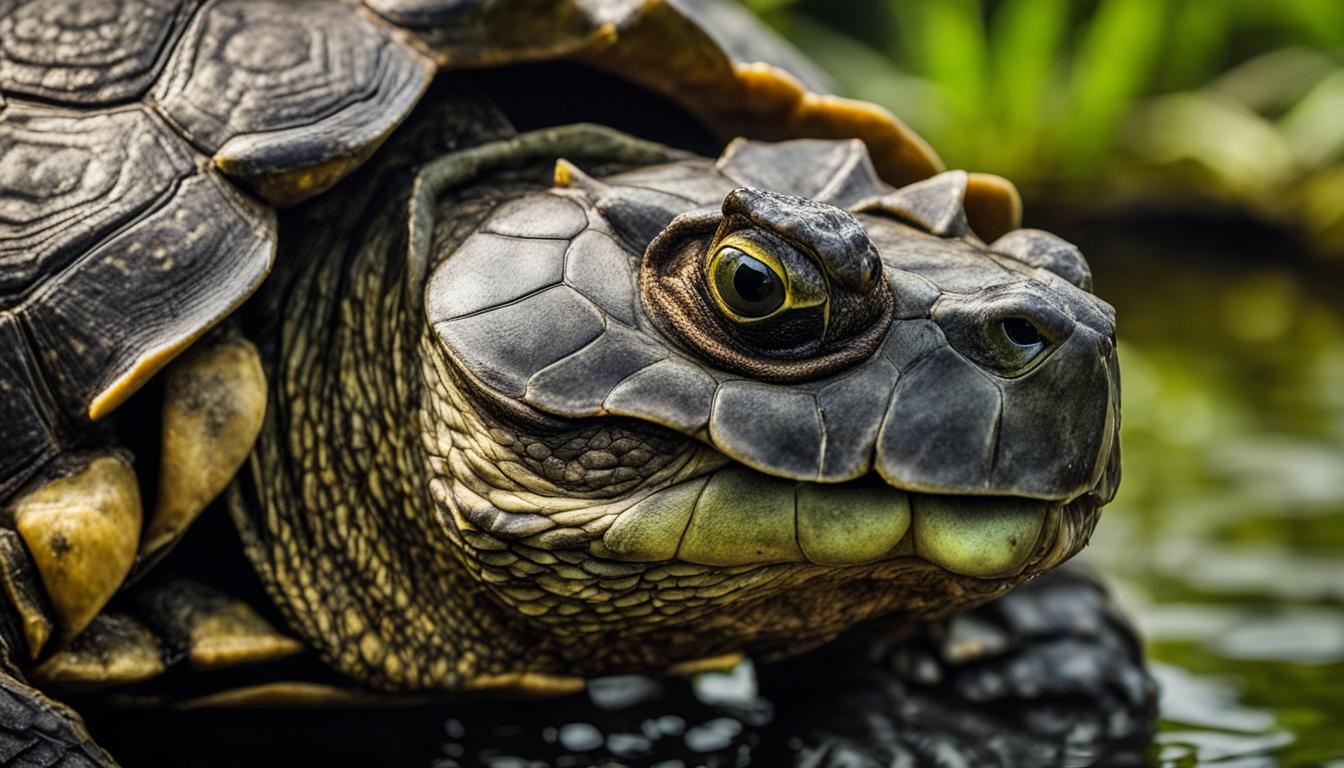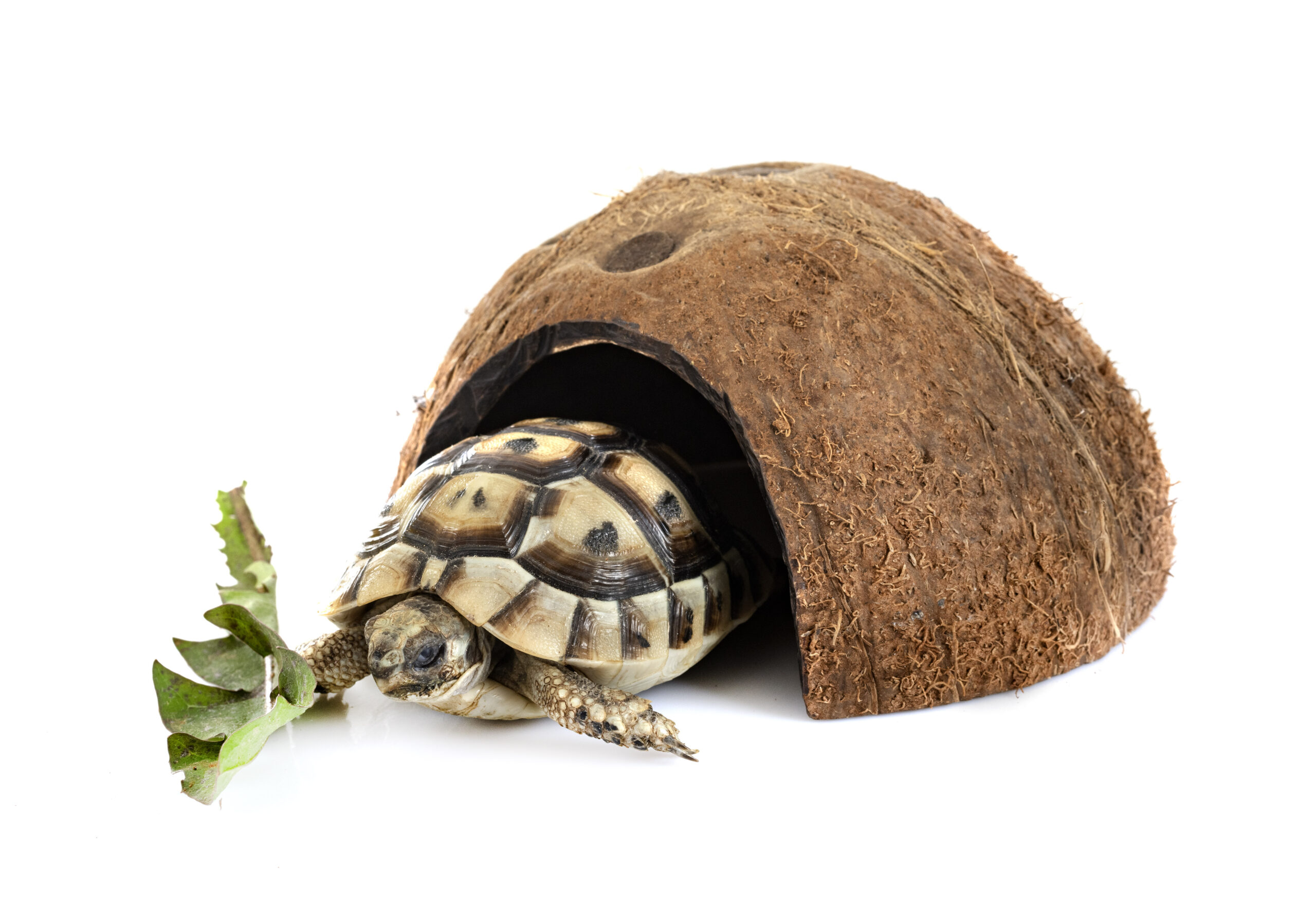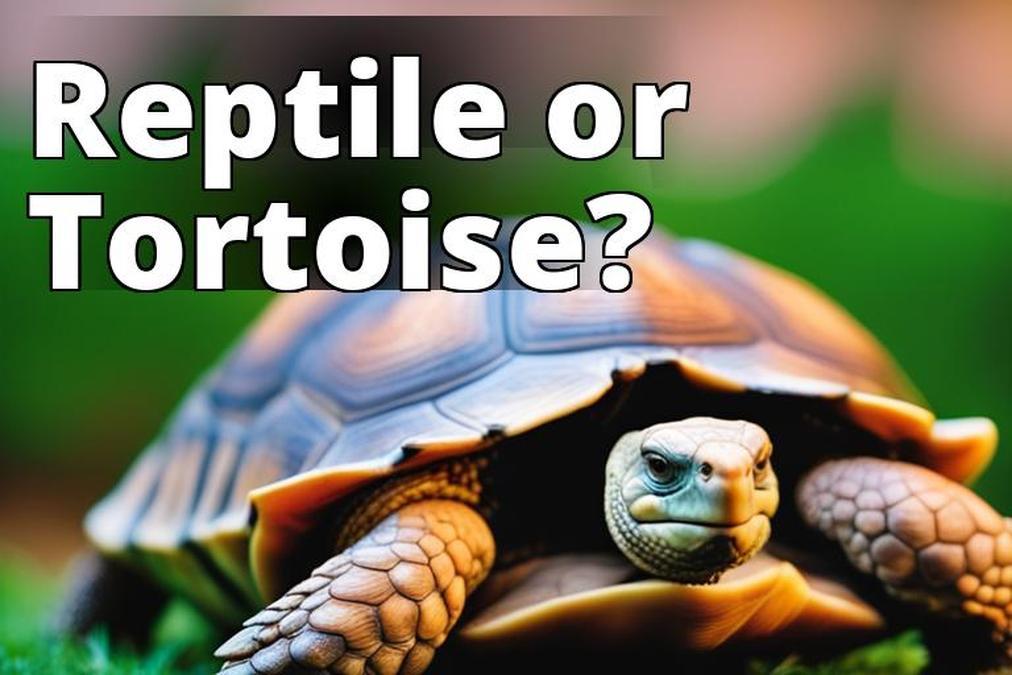Snapping turtles are fascinating creatures that inhabit freshwater habitats, but many people wonder if it’s safe to interact with them. In this article, we will explore the behavior, care, and handling of snapping turtles to provide you with a better understanding of these unique reptiles.
Key Takeaways:
- Snapping turtles are generally docile but can become dangerous when provoked or threatened.
- They primarily inhabit lakes, ponds, and other freshwater habitats.
- It is best to leave snapping turtles in their natural habitat and not keep them as pets.
- Snapping turtles can grow to be large, live for several decades, and reproduce by laying eggs.
- If you encounter a snapping turtle, observe from a distance and only intervene if necessary.
Snapping Turtle Behavior and Habitat
Snapping turtles, known for their unique appearance and impressive biting ability, have fascinating behavior and specific habitat preferences. Understanding their behavior and habitat is essential for appreciating these remarkable creatures.
Behavior:
Snapping turtles are primarily aquatic, spending most of their time in lakes, ponds, and other freshwater habitats. They have a distinctive hunting strategy, where they wait patiently underwater for prey to come within striking distance. Their diet consists of both plant matter and animal prey, making them omnivores. This varied diet allows snapping turtles to adapt to different food sources available in their environment.
When it comes to defense, snapping turtles are formidable. They have a powerful bite and can deliver a painful lunge if provoked or threatened. However, they are generally docile and tend to avoid humans in the water. Keeping a safe distance and respecting their space is crucial to avoid any potential conflicts.
Habitat:
Snapping turtles prefer freshwater habitats such as lakes, ponds, swamps, and slow-moving rivers. They require access to both land and water, as they will often emerge from the water to bask in the sun or lay eggs. These habitats provide them with the necessary resources for feeding, mating, and nesting.
When it comes to nesting, female snapping turtles will travel long distances to find suitable nesting sites. They prefer sandy or loose soil to lay their eggs. It is important to avoid disturbing nesting females to ensure the successful reproduction and survival of future generations.
The freshwater habitat supports the complex ecosystem that snapping turtles are part of. They play a crucial role in maintaining the balance by acting as scavengers, feeding on both living and dead organisms. Their presence helps keep aquatic environments clean and healthy.

In conclusion, understanding snapping turtle behavior and their preferred habitat is key to coexisting peacefully with these remarkable reptiles. By respecting their space and promoting conservation efforts, we can ensure the long-term survival of snapping turtles and the ecosystems they inhabit.
Snapping Turtle Care and Conservation
When it comes to snapping turtles, it is important to understand that they are best left to their natural habitats and should not be kept as pets. These unique reptiles require specific care and environment to thrive. Snapping turtle care involves providing them with access to a suitable aquatic habitat, as well as a varied diet that includes both plant matter and animal prey.
Conservation efforts for snapping turtles are essential to ensure their long-term survival. These remarkable creatures play a crucial role in maintaining aquatic ecosystems by acting as a cleanup crew. By consuming both dead and decaying matter, they help keep the water clean and prevent the spread of harmful pathogens.
Protecting snapping turtle populations and their habitats is vital for maintaining the balance of freshwater ecosystems. Human activities such as habitat destruction, pollution, and illegal collection can have significant negative impacts on their populations. It is crucial to promote turtle conservation by supporting organizations that work towards protecting these incredible creatures and their natural habitats.
| Threats to Snapping Turtles | Conservation Actions |
|---|---|
| Pollution | Support legislation and initiatives aimed at reducing pollution in freshwater habitats. |
| Habitat destruction | Participate in habitat restoration projects and advocate for the protection of wetlands and other vital turtle habitats. |
| Illegal collection | Report any illegal collecting or trading of snapping turtles to the appropriate authorities. |
| Vehicle collisions | Drive cautiously in areas where snapping turtles are known to cross roads, and assist them in safely reaching their destination if needed. |
By taking these steps, we can contribute to the preservation of snapping turtles and ensure their continued existence for future generations to appreciate and admire.
Snapping Turtle Size, Lifespan, and Reproduction
Snapping turtles are known for their impressive size and longevity. These fascinating reptiles can grow to be quite large, with adults reaching weights of up to 30 pounds. The size of a snapping turtle can vary depending on factors such as sex and available resources. Males tend to be smaller than females, averaging around 12 to 18 inches in shell length, while females can reach up to 18 to 20 inches or more.
When it comes to lifespan, snapping turtles are among the longest-lived turtles in North America. They have been observed to live for several decades in the wild, with some individuals reaching the age of 50 years or more. Their long lifespan allows them to have a significant impact on their ecosystems.
Reproduction in snapping turtles is a fascinating process. Females typically reach sexual maturity between the ages of 10 and 20 years. They mate in the water, with the male using his long tail to stimulate the female and stimulate the release of eggs. After mating, the female will travel to find a suitable nesting site, often crossing long distances. She will dig a hole in the ground and lay her eggs, typically between 20 to 40 eggs per clutch. The eggs will then hatch after an incubation period of around 60 to 90 days, with the baby turtles making their way to the water.

Key Points:
- Snapping turtles can grow up to 30 pounds in weight.
- Males are smaller than females, averaging 12 to 18 inches in shell length.
- Females can reach up to 18 to 20 inches or more in shell length.
- Snapping turtles can live for several decades, with some reaching 50 years of age.
- Females lay between 20 to 40 eggs per clutch.
- The incubation period for snapping turtle eggs is around 60 to 90 days.
Understanding the size, lifespan, and reproduction of snapping turtles provides valuable insights into their remarkable nature and ecological importance. These resilient creatures have adapted to their environments with their impressive size, long lifespans, and unique reproductive strategies. By appreciating and respecting these aspects, we can better protect and conserve these incredible reptiles for future generations to enjoy.
How to Safely Handle a Snapping Turtle
Tackling a snapping turtle requires caution and proper technique to avoid any harm or injury. Whether you encounter one in the wild or need to handle a injured turtle, following these steps will help ensure your safety and the well-being of the animal.
Approaching and Holding a Snapping Turtle
When approaching a snapping turtle, it is crucial to remember that they are skittish around humans and may feel threatened. To safely handle a snapping turtle, always approach from behind, as they have limited peripheral vision and can be defensive if approached head-on.
Proper Technique: When picking up a snapping turtle, firmly grip the top shell (carapace) with your thumbs while supporting the bottom shell (plastron) with your fingers. Keep the turtle’s head pointed away from you at all times to avoid any risk of bites.
Transporting a Snapping Turtle
If you need to transport a snapping turtle, it is essential to provide a suitable container to ensure its safety and minimize stress. Use a sturdy and well-ventilated container, such as a large plastic or rubber bin, and secure the lid to prevent any escape.
Transport Tips: Line the container with a damp towel or newspaper to maintain humidity, and place a towel on the floor of the container to provide traction and prevent the turtle from slipping during transportation.
Seeking Professional Help
If you come across an injured or stranded snapping turtle, it is best to contact a local wildlife rescue center or animal control agency for assistance. These professionals have the necessary expertise and equipment to handle and care for injured wildlife properly.
Remember: It is crucial to prioritize the safety of both yourself and the snapping turtle. While it may be tempting to intervene, professionals are equipped to handle these situations safely and ensure the turtle’s well-being.
By following these guidelines, you can ensure the safe handling and transportation of snapping turtles, minimizing stress and promoting the well-being of these fascinating creatures.

What to do if you find a snapping turtle
If you happen to come across a snapping turtle in the wild, it’s important to approach the situation with caution and respect for the animal’s natural habitat. Observing the snapping turtle from a distance is always recommended, as these creatures are generally best left undisturbed. However, there are a few scenarios in which your intervention may be necessary to ensure the well-being of the turtle.
Assisting a Snapping Turtle Crossing a Road
If you encounter a snapping turtle attempting to cross a road, it’s crucial to help it reach the other side safely. Gently nudge the turtle in the direction it’s heading using a long stick or broom. This helps guide the turtle away from potential danger and prevents it from getting struck by passing vehicles. Alternatively, you can use a box or container to create a barrier around the turtle, allowing it to continue its journey without interference.
Supporting an Injured Snapping Turtle
If you come across a snapping turtle that appears to be injured, it’s important to handle the situation with care. Do not attempt to handle the turtle directly, as it may be frightened or in pain. Instead, contact a local wildlife rescue center or animal control authority to report the injured turtle. They will have the necessary expertise and resources to provide appropriate medical attention and rehabilitation for the turtle.
Promoting Snapping Turtle Conservation
One of the best ways to help snapping turtles is to support their conservation efforts. You can contribute by educating others about the importance of respecting their natural habitat and avoiding unnecessary disturbances. Additionally, consider volunteering or donating to organizations dedicated to turtle conservation. Every effort counts in ensuring the long-term survival of these remarkable reptiles.
| What to do if you find a snapping turtle | How to help a snapping turtle |
|---|---|
| Observe from a distance | Assist in crossing roads |
| Avoid unnecessary disturbance | Report injured turtles to wildlife rescue centers |
| Promote conservation efforts | Support turtle conservation organizations |
Conclusion
Snapping turtles are fascinating creatures that play an important role in their ecosystems. These freshwater turtles spend most of their time in the water, where they patiently wait for prey to come by. While snapping turtles have the ability to deliver powerful bites, they are generally docile as long as they are left undisturbed.
It is crucial to respect the natural habitat of snapping turtles and promote their conservation. These unique reptiles contribute to the health of aquatic ecosystems by acting as a cleanup crew. By leaving them in their natural habitats and avoiding disturbance, we can ensure their wellbeing and the balance of their ecosystem.
If you ever come across a snapping turtle in the wild, it is best to observe from a distance. Unless the turtle is in immediate danger, it is recommended to let it be and not disturb it. If you encounter an injured snapping turtle, it is important to contact a wildlife rescue center for professional assistance.
FAQ
Is it safe to touch a snapping turtle?
Snapping turtles should be left undisturbed and it is not recommended to touch them. While they are generally docile in the water, they can become dangerous if provoked or threatened.
What is the behavior and habitat of snapping turtles?
Snapping turtles spend most of their time in the water, primarily in lakes, ponds, and other freshwater habitats. They are omnivores, consuming both plant matter and animal prey. They are generally docile in the water and actively avoid humans.
How should snapping turtles be cared for and conserved?
Snapping turtles are best left in their natural habitats and should not be kept as pets. They require specific care and environment to thrive. It is important to promote their conservation in the wild as they play a crucial role in maintaining aquatic ecosystems.
What is the size, lifespan, and reproduction of snapping turtles?
Snapping turtles can grow to be quite large, with adults reaching weights of up to 30 pounds. They have a long lifespan, often living for several decades. Snapping turtles reproduce by laying eggs, with females often traveling long distances to find suitable nesting sites.
How can a snapping turtle be handled safely?
When handling a snapping turtle, it is essential to exercise caution and prioritize safety. Approach the turtle from behind and hold it with your thumbs on the top shell and fingers on the bottom shell. Keep the turtle’s head pointed away from you at all times to avoid injury.
What should you do if you find a snapping turtle?
If you come across a snapping turtle in the wild, it is recommended to observe from a distance and not to disturb the animal unless necessary. If the turtle is crossing a road, you can gently nudge it in the direction it is heading or use a box or container to safely move it across. If the turtle appears to be injured, contact a wildlife rescue center for assistance.
What is the conclusion about snapping turtles?
Snapping turtles are fascinating creatures that play an important role in their ecosystems. While they can pose a threat if provoked, they are generally not dangerous as long as they are left undisturbed. It is crucial to respect their natural habitat and promote their conservation for the well-being of these unique reptiles.







